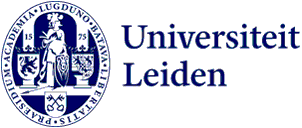
CADS student contributes to SOMO research report that is being picked up by international media
Doing an internship at a research organisation and contributing to a report that is subsequently picked up by the national and international media. Who wouldn't like to be a part of that? Eva Loeve (22), a fourth-year student of Cultural Anthropology, worked for five months at Centre for Research on Multinational Corporations (SOMO). At the end of May 2021, the report "Spinning Around Workers' Rights" about working conditions in spinning mills in South India was published, on which Eva contributed. De Volkskrant and The Guardian, among others, reported on this research. Five questions about Eva her internship experience.
You were an intern at SOMO, what exactly did you do there?
‘SOMO is an independent foundation that researches multinational corporations and the impact of their activities on people and the environment. These are, for example, big tech companies or companies in the clothing or agricultural industries. During my internship, I worked in a team that focuses on the textile and clothing industry. I was mainly busy with supporting tasks, such as filtering data to see if there are any connections between them. For example, a link between the castes to which Indian workers belong and the level of their wages or the number of hours they work. I also contributed to the “Together for decent leather” project and helped with the complaint against C&A.’

How did you get this internship?
'During my second year of Cultural Anthropology, I sent an open application. I was following the course Economics and Ecology. A guest lecture was given by someone from SOMO, so I got to know their work a bit. I found it very interesting, which is why I sent an e-mail asking whether they were still looking for interns. And that was the case.’
What did you learn from your internship?
‘Mainly working in the field. I found that very enjoyable and valuable. One of the two researchers in the team where I worked is an anthropologist as well, so it was really nice to see how an anthropologist works in practice. In addition, I was mainly involved in quantitative research. During the study programme, we primarily do qualitative research, so it was very useful to gain more experience with that as well.’
Would you recommend other students to do an internship?
‘Yes, I intentionally chose to study an extra year in order to do an internship. I finished all my courses in the third year, except for my thesis. This allowed me to do an internship in the first semester of the fourth year and currently I'm writing my thesis. But you can also choose to do an internship in the third year. Many students opt for a minor, but I can definitely recommend doing an internship. It is very useful and interesting to step outside the classroom and put your knowledge and skills into practice. You also learn a lot about yourself and how you work in a professional setting. How do you approach this? At the beginning I was a bit wary, but I have become more and more proactive. I really enjoyed it.’
It is very useful and interesting to step outside the classroom and put your knowledge and skills into practice.
The report you collaborated on has received a lot of media attention now. How does that work?
'The intention of these investigations is obviously always to get media attention for the cases, but the question is whether that will succeed. My internship ended in January, so I did not experience the final phase from the inside. But it is very satisfying to see that it succeeded. De Volkskrant published the article ‘Dwangarbeid in Indiase spinnerijen werkt ook door in Nederlandse kledingbedrijven’ (Forced labour in Indian spinning mills also affects Dutch clothing companies) and from there, other Dutch newspapers and the NOS followed the story. The Guardian also reported on it. That is really cool. The report looked at 11 indicators of forced labour, based on interviews with 750 workers in spinning mills. This was used to identify the brands and retailers in the clothing industry that were associated with them. The aim of the report is to facilitate structural improvements in the working and living conditions of workers. It is a very important theme, so it is good that it is getting noticed by a wider audience.’
